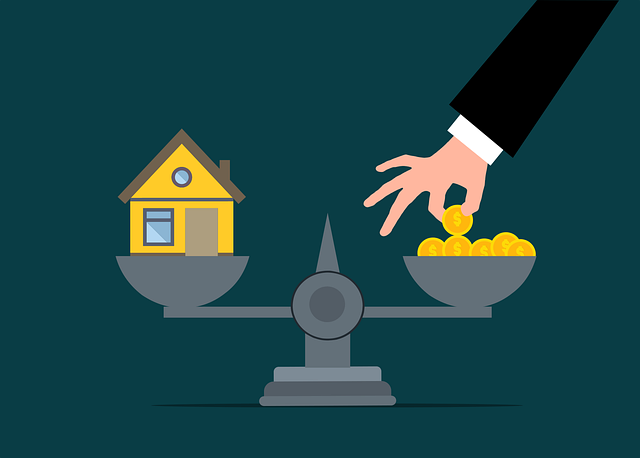Selling fire-damaged properties in California involves navigating complex regulations, insurance considerations, and buyer attitudes. There are two main sales approaches: as-is sales for cash buyers or traditional sales with an agent, focusing on transparency. Key steps include understanding legal requirements, reviewing insurance policies, targeting specific buyer groups, and strategically marketing the property's renovation potential to ensure a successful transaction.
“Discover the world of as-is property sales with our comprehensive guide. We explore the ins and outs of this unique real estate niche, focusing on California’s specific landscape, particularly when it comes to selling fire-damaged properties. From understanding legal intricacies and insurance considerations to effective marketing strategies, this article is your go-to resource. Learn how to navigate these transactions successfully, attract buyers, and maximize your returns in the competitive California market.”
- Understanding As-Is Property Sales: A Comprehensive Guide
- The Unique Case of Selling Fire-Damaged Properties in California
- Navigating Legal and Insurance Aspects for As-Is Transactions
- Marketing and Finding Buyers for Your As-Is Real Estate Asset
Understanding As-Is Property Sales: A Comprehensive Guide

Selling a fire-damaged property in California can be a complex process, but understanding as-is sales is a crucial first step. As-is property sales refer to the direct sale of real estate “as is,” meaning buyers accept the property in its current state, without any repairs or improvements from the seller. This approach is particularly relevant for investors and buyers who plan to renovate or rebuild.
In California, fire-damaged properties often fall into this category, especially when insurance has covered most or all of the damage. Sellers can choose to either sell quickly at a lower price point to attract cash buyers or opt for a more traditional sales process with a real estate agent. Either way, transparency is key—buyers will want to know the history of the property and any potential issues, so accurate disclosure is essential for a smooth transaction.
The Unique Case of Selling Fire-Damaged Properties in California

Selling fire-damaged properties in California presents a unique set of challenges due to the state’s stringent building and safety regulations. After a fire, properties often require extensive repairs and renovations to meet code requirements, which can be both costly and time-consuming. This process involves thorough inspections, permit applications, and adherence to specific restoration standards to ensure the safety and habitability of the residence.
California’s strict regulations aim to protect residents and prevent potential hazards, but they can significantly impact the selling process for fire-damaged properties. The market demand for such properties varies; some buyers seek opportunities for renovation projects, while others may be reticent due to perceived risks or emotional connections to nearby areas affected by past fires. Understanding these nuances is key to navigating the sale of fire-damaged real estate in California successfully.
Navigating Legal and Insurance Aspects for As-Is Transactions

When considering a sell fire damaged property in California, understanding the legal and insurance aspects is crucial for a smooth as-is transaction. Buyers and sellers must navigate various regulations and policies that govern such sales to ensure compliance and mitigate risks. In California, selling a fire-damaged property typically involves disclosing all known issues to potential buyers, including the extent of damage and any safety hazards. This transparency helps prevent legal disputes later.
Insurance plays a vital role in as-is transactions. Sellers should review their home insurance policies to understand coverage for fire damage. Many standard policies exclude or limit compensation for damages caused by fires. Special clauses or endorsements might be needed to cover these types of losses, which can impact the overall selling price and negotiation process. Buyers, on the other hand, may want to secure a thorough inspection to assess the true scope of damage and obtain accurate insurance quotes before finalizing the purchase.
Marketing and Finding Buyers for Your As-Is Real Estate Asset

When it comes to selling a fire-damaged property in California, marketing and attracting buyers can be a unique challenge. However, with the right strategy, it’s possible to turn this potential setback into an opportunity. Start by highlighting the property’s potential for renovation; many buyers seek affordable, as-is properties to transform into their dream homes. Emphasize the cost savings of purchasing a fire-damaged house and the satisfaction of restoring it to its former glory or even improving it beyond its previous state.
Utilize online real estate platforms and social media to reach a wide range of buyers. Consider partnering with local contractors or renovation experts who can vouch for your property’s viability and provide insights into the remodeling process. Additionally, target specific buyer groups, such as first-time homeowners, investors, or those seeking to rebuild after natural disasters. Tailoring your marketing efforts to these audiences can make your fire-damaged asset more appealing and increase the chances of a successful sale.
Selling fire-damaged properties in California, or any “as-is” real estate, requires a comprehensive understanding of legal and insurance considerations, along with an effective marketing strategy. By navigating these aspects adeptly, you can unlock the potential of your asset. Whether it’s a fire-affected residence or any other property in need of repair, informed decision-making and transparent communication will ensure a successful sale. Remember, while “as-is” sales present unique challenges, they also offer opportunities for savvy buyers seeking to invest in renovation projects or secure affordable real estate.






